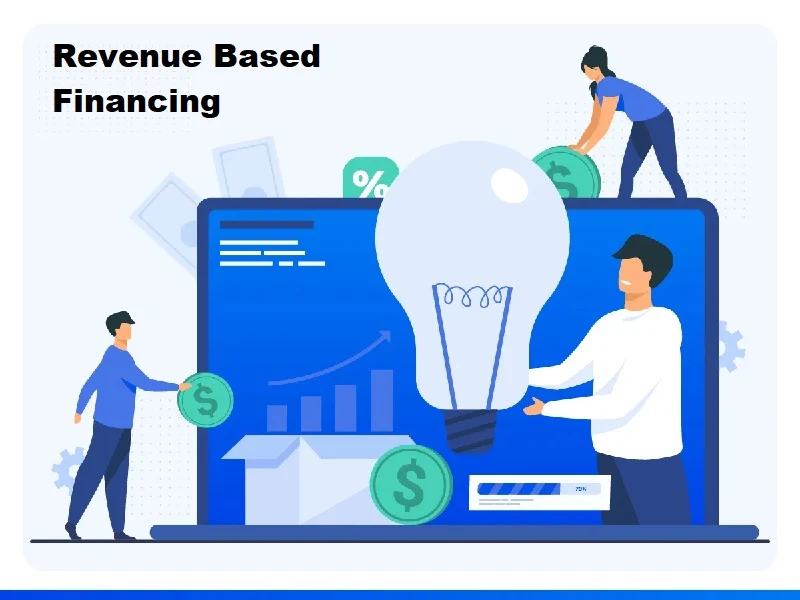Revenue based financing is an progressive funding version that offers companies bendy capital in trade for a percentage of their future sales. Unlike conventional loans, it doesn’t require fixed monthly bills or equity dilution, making it a desired preference for startups and small companies. With growing calls for non-dilutive financing answers, this model has received interest throughout industries like SaaS, eCommerce, and DTC manufacturers.
Entrepreneurs looking for rapid, scalable, and risk-adjusted capital frequently flip to sales primarily based on financing to fuel advertising and marketing, product improvement, and operational boom. In this comprehensive guide, we’ll explore how this funding approach works, its pros and cons, and whether or not it’s proper to your enterprise.
What is Revenue Based Financing?
Definition
Revenue based financing (RBF) is an investment approach wherein investors offer capital to an enterprise in exchange for a percent of ongoing gross sales until a predetermined amount is repaid. This repayment quantity is typically a multiple of the original investment, regularly 1.3x to 3x.
Key Elements of RBF:
- Capital Advance: Businesses receive budget upfront.
- Repayment via Revenue Share: A constant percentage of monthly revenues is used to repay the development.
- No Equity Dilution: Founders hold 100% possession.
- Flexible Repayment: Payments range with sales performance.
How Revenue Based Financing Works
- Eligibility Assessment: Lenders examine month-to-month recurring revenue, margins, and boom history.
- Offer Structuring: Based on cash float projections, an offer is made with:
- Capital amount
- Repayment cap (generally 1.5x the amount)
- Monthly sales percentage (5% to 20%)
- Fund Disbursement: Once familiar, funds are deposited, regularly within a few days.
- Monthly Repayments: Businesses repay month-to-month based on real-time sales till the cap is met.
Revenue Based Financing Example
Suppose a SaaS startup receives ₹50 lakhs through revenue based financing. The reimbursement cap is
| Month | Revenue | 10% Repayment |
| 1 | ₹10 lakhs | ₹1 lakh |
| 2 | ₹15 lakhs | ₹1.5 lakhs |
Who Should Use Revenue Based Financing?
Best Suited For:
- SaaS Companies with MRR (Monthly Recurring Revenue)
- eCommerce Brands with steady online income
- DTC Startups in search of advertising increase without dilution
- Businesses With High Margins and predictable sales
Benefits of Revenue Based Financing
✅ No Equity Dilution
Founders don’t give up possession or board manage.
✅ Flexible Repayments
Payments are regulated primarily based on overall performance, warding off coin strain.
✅ Fast Access to Capital
Funding decisions are made quickly, ideal for scaling operations or marketing.
✅ Founder-Friendly
No private guarantees or collateral normally required.
✅ Performance Aligned
Investors succeed whilst your business grows.
Limitations of Revenue Based Financing
❌ Limited Funding Amount
It’s generally capped based totally on revenue records might not suffice for capital extensive wishes.
❌ High Effective Cost
The reimbursement cap (e.G., 1.5x) should make RBF extra steeply-priced than conventional loans.
❌ Revenue Volatility Risk
Fluctuating earnings could both accelerate or slow down repayments unpredictably.
❌ Not Ideal for All Industries
Works exceptional for agencies with routine or predictable sales streams.
Revenue Based Financing vs Traditional Loans
| Factor | Revenue Based Financing | Traditional Loans |
| Repayment Method | % of Revenue | Fixed EMI |
| Collateral Needed | No | Often Required |
| Equity Involved | No | No |
| Flexibility | High | Low |
| Approval Time | Fast | Slower |
Revenue Based Financing vs Venture Capital
| Criteria | Revenue Based Financing | Venture Capital |
| Equity Dilution | No | Yes |
| Decision Speed | Fast | Slow |
| Founder Control | Retained | Reduced |
| Ideal Stage | Growth/Scaling | Early/Risk Capital |
Top Revenue Based Financing Providers Today
🌟 Clearco (previously Clearbanc)
Offers investment tailored to eCommerce brands, with automated revenue tracking.
🌟 Pipe
Specializes in turning habitual revenue into upfront capital for SaaS corporations.
🌟 Capchase
Provides non-dilutive increase capital based totally on future subscription revenues.
🌟 GetVantage (India)
India-based totally RBF issuer targeted startups and virtual-first manufacturers.
Future of Revenue Based Financing Today
As virtual agencies maintain scale, revenue based total financing nowadays is turning into an increasing number of popularity amongst bootstrapped founders, mainly in rising markets like India. With advancements in monetary records integration and fintech systems, this version is about to adapt with AI-driven underwriting and embedded financing solutions for B2B platforms.
Summary
Revenue based total financing offers bendy, speedy, and founder-friendly investment for corporations with ordinary sales streams. With no fairness dilution and scalable repayments, it’s ideal for SaaS, eCommerce, and DTC startups. However, it is fine appropriate for increased stages now, not early improvement. Evaluate your revenue consistency earlier than choosing RBF.
Frequently Asked Questions (FAQs)
Is sales based financing suitable for early-level startups?
Generally, no. It’s more suitable for startups with predictable and ordinary sales.
Do I lose equity with revenue based financing?
No. This version is non-dilutive, meaning you keep 100% ownership.
How much funding can I get via sales primarily based financing?
It depends on your month-to-month revenue and historic overall performance. Typically, 1–3x of your month-to-month sales.
How speedy can I get funded?
Many RBF carriers can disburse finances inside some days after approval.
